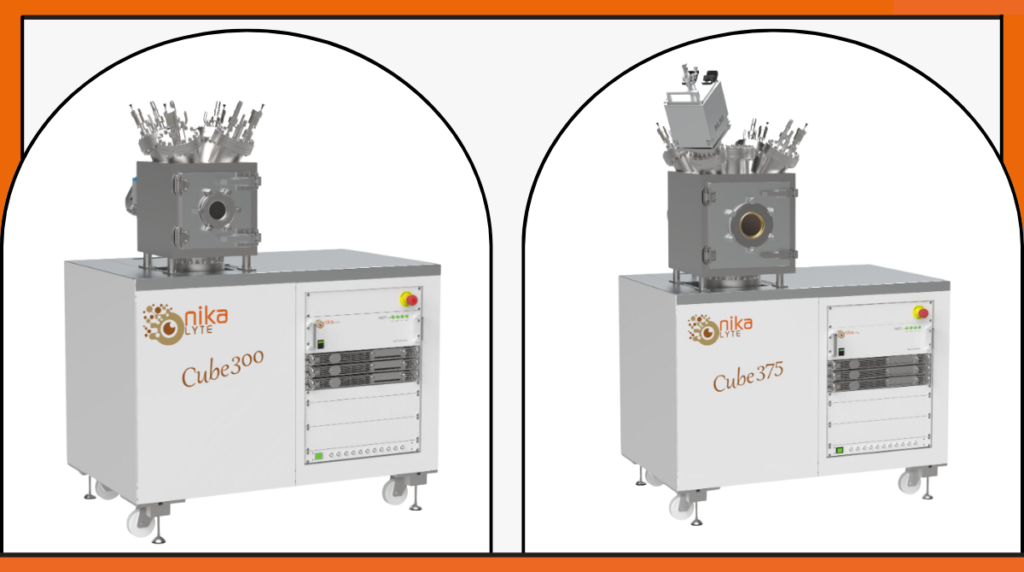Plasma Vapor Deposition (PVD) has redefined the standards for high-performance coatings, offering unparalleled durability, precision, and adaptability. By leveraging the unique properties of plasma, this process enhances coating characteristics in ways that traditional methods cannot match. Below, we’ll dive deeper into how PVD works, its benefits, and why it’s the gold standard for advanced coating performance.
What is Plasma Vapor Deposition?
Plasma vapor deposition is a specialized coating process that uses plasma—a high-energy state of matter composed of ionized gas—to deposit thin films of material onto a substrate. The result is a durable and uniform layer with superior adhesion and performance characteristics.
How PVD Enhances Coating Performance
PVD’s transformative impact on coatings stems from its ability to address critical performance needs across industries. This is how it works:
Unmatched Durability and Wear Resistance
PVD coatings are renowned for their hardness and durability.
- How It Works: Plasma generates a dense, tightly bonded atomic structure in the coating. This can significantly boost its resistance to wear and mechanical stress.
- Why It Matters: The dense structure formed by PVD directly enhances coating performance by allowing the material to endure more abrasive and high-pressure environments without degradation. This results in tools and machinery that maintain their functionality over extended periods.
Strong Adhesion Under Stress
Adhesion is a cornerstone of coating performance, and PVD delivers exceptional results.
- How It Works: Plasma cleans and activates the substrate surface at a molecular level, ensuring a robust bond between the coating and the material beneath.
- Why It Matters: By creating a stronger bond, PVD prevents the coating from peeling or cracking under stress, ensuring the protective or functional layer remains intact. This stability directly improves the reliability of components like aerospace parts and medical devices.
Consistent Coating Uniformity
PVD achieves an unparalleled level of uniformity, even on intricate geometries.
- How It Works: Plasma spreads vaporized material evenly, ensuring consistent thickness across complex surfaces.
- Why It Matters: The uniformity achieved through PVD eliminates weak spots and ensures consistent performance throughout the component’s surface, a critical factor in high-precision applications such as microelectronics or surgical tools.
Customizable Coating Properties
One of PVD’s standout features is its adaptability to meet specific performance needs.
- How It Works: Through adjusting plasma parameters and target materials, PVD coatings can be tailored for specific attributes like hardness, corrosion resistance, or even optical properties.
- Why It Matters: The ability to customize coatings enhances performance by allowing materials to be precisely engineered for their intended use, delivering optimal functionality and durability across industries such as aerospace and automotive manufacturing.
Reduced Friction and Smoother Surfaces
PVD enhances surface smoothness, reducing friction in dynamic applications.
- How It Works: The plasma-assisted process establishes a dense, low-friction surface with minimal imperfections.
- Why It Matters: PVD coatings minimize friction and wear during operation through reducing surface roughness. Doing this can improve performance in engines, bearings, and other moving parts while extending their operational lifespan.
Superior Corrosion and Oxidation Resistance
PVD provides a protective barrier against environmental damage.
- How It Works: The coating’s dense, chemically inert structure resists exposure to moisture, chemicals, and oxygen.
- Why It Matters: This resistance directly improves performance by protecting components from corrosion and chemical reactions, which is critical for extending the life of equipment used in marine, industrial, or chemical processing environments.
High-Temperature Stability
PVD coatings retain their integrity even under extreme heat.
- How It Works: The strong atomic structure produced by plasma resists thermal degradation.
- Why It Matters: By maintaining their properties at high temperatures, PVD coatings ensure consistent performance in applications such as turbine blades and automotive engines, where thermal stress can be severe.
The Real-World Impact of PVD Coatings
PVD offers more than theoretical improvements. In fact, it delivers tangible benefits across various industries:
- Aerospace: Protective coatings on turbine blades improve reliability and efficiency.
- Medical Devices: Biocompatible coatings reduce rejection risks for implants and surgical tools.
- Electronics: Thin, precise coatings enable advancements in microchips and semiconductors.
- Manufacturing Tools: Hard coatings extend tool lifespans and improve performance under heavy loads.
Nikalyte’s NL-CUBE Is The System You Need For Generating Effective Coatings
Whether enhancing tools, medical implants, or next-generation electronics, PVD demonstrates the transformative potential of advanced materials science. Our own modular PVD systems push these boundaries further. They enable high-precision coatings for diverse applications with features like nanoparticle generation and uniform deposition on complex geometries. Discover how PVD and the NL-CUBE can elevate your products by contacting our team today.

